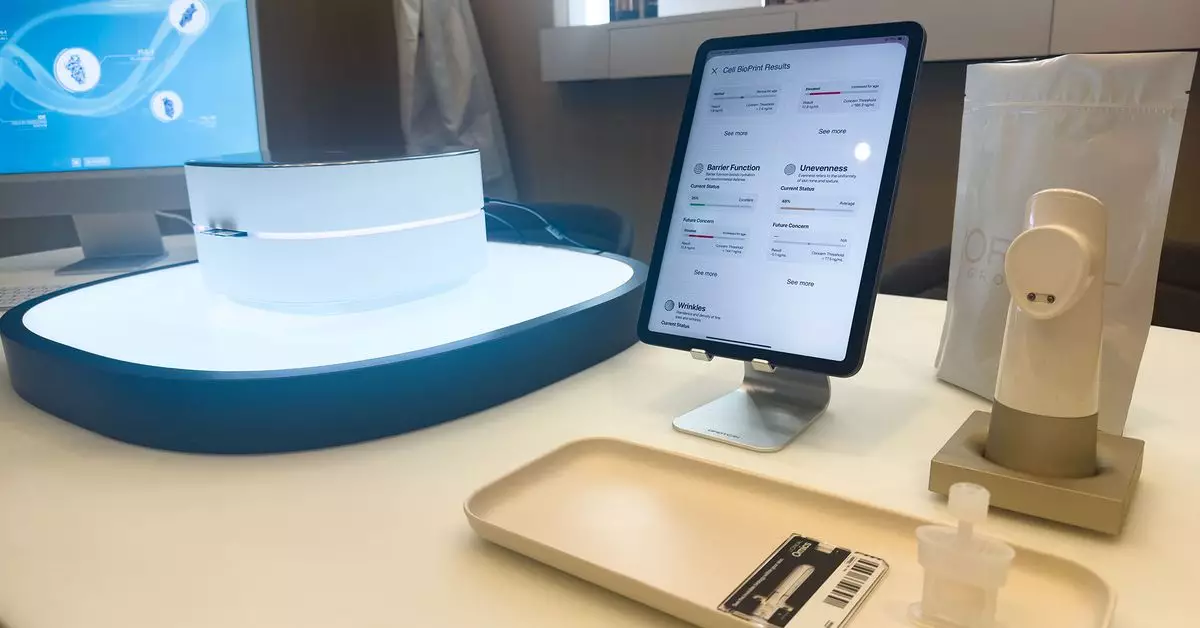In a world saturated with skincare products and expert advice, it can be overwhelming to navigate the multitude of choices available for maintaining healthy skin. With that in mind, consumers are increasingly looking for personalized solutions that promise tailored recommendations based on individual skin needs. Enter L’Oréal’s Cell BioPrint, a device that analyzes various skin parameters and provides insights aimed at helping users optimize their skincare routine.
Las Vegas, known for its dry climate, provides an ideal backdrop for examining the complexities of skincare in harsh environmental conditions. Many individuals, regardless of age or skin type, can attest to waking up with dry skin, chapped lips, or irritation after exposure to arid air. This situation serves as a reminder of the importance of effective moisturizing and the continuous battle against environmental aggressors that our skin faces.
The Cell BioPrint offers an innovative approach to this problem. Unlike many one-size-fits-all solutions, this advanced device promises to analyze your skin on a molecular level. Through precise measurement of various skin conditions—including oiliness, wrinkle formation, and uneven skin tone—the Cell BioPrint aims to provide users with a detailed report that accounts for both current conditions and future susceptibilities.
The process of using the Cell BioPrint is straightforward, and perhaps its greatest strength is the fact that a qualified professional conducts the analysis. This eliminates many common errors that can arise from do-it-yourself methods. During a session, a staff member collects skin samples and scans the skin using advanced imaging tools, ensuring a systematic and comprehensive assessment.
What sets the Cell BioPrint apart is its focus on how various proteins in the skin can predict future skin issues. This approach uses cutting-edge research in the field of proteomics to identify key proteins displayed in skin cells. Such targeted analysis helps users understand their unique vulnerabilities, enabling them to make informed choices regarding their skincare regimens.
After undergoing the analysis, users receive individualized insights that can radically change how they treat their skin. For instance, someone might learn that they possess a robust skin barrier currently but are at risk for deterioration as they age. Furthermore, identifying skin responses to popular ingredients like retinol can allow users to remove ineffective products from their routines, thus averting potential frustrations and wasted costs.
What’s vital here is the promise of informed recommendations. As consumers often feel lost in the complex skincare landscape filled with influencers advocating for expensive products, having a data-driven approach offers a sigh of relief. Understanding which products are beneficial and necessary can reduce anxiety over skincare purchases.
Despite the allure of personalized skin analysis, skepticism remains warranted, particularly in a market overwhelmed with pseudoscience. Many companies propose miraculous solutions, yet lack the robust scientific backing that inspires confidence. As such, L’Oréal’s commitment to transparency is commendable. The company’s collaboration with 800 biologists who have invested years into studying skin cell proteins reinforces the reliability of the Cell BioPrint’s assessments.
Guive Balooch, the global vice president of L’Oréal’s Technology Incubator, explains that the device has been developed through rigorous research conducted over ten years. The findings do not merely lead to marketing gimmicks; they foster a deeper understanding of how individual lifestyles, geography, and genetics contribute to skin health.
At its core, L’Oréal’s Cell BioPrint encourages a mindful approach to skincare. The message resonates: it’s not about acquiring countless products for every hypothetical problem but about honing in on what works for your skin. Balooch notes that this technology “isn’t meant to encourage people to buy more.” Instead, it aims to prevent unnecessary spending on products that may be misaligned with individual skin needs.
The skincare industry often promotes overwhelming routines filled with numerous products, leading to confusion and mistrust among consumers. By focusing on scientifically driven parameters, this technology could serve as a turning point in the industry, steering individuals toward products supported by research rather than fleeting trends.
With advancements in technology and research, the notion of personalized skincare is on the rise. The potential for devices like the Cell BioPrint to eventually reach household usage is exciting. While this device is currently limited to professional environments, the implications of widespread access to personalized skincare solutions could empower consumers to make educated decisions while caring for their skin.
The Cell BioPrint represents not just another gadget in the beauty tech landscape, but a revolutionary tool with the capacity to redefine how we approach skincare. By providing personalized insights based on scientific rigor, it improves the chance of success in complex skincare journeys and ultimately promotes an informed consumer landscape that benefits everyone involved.

